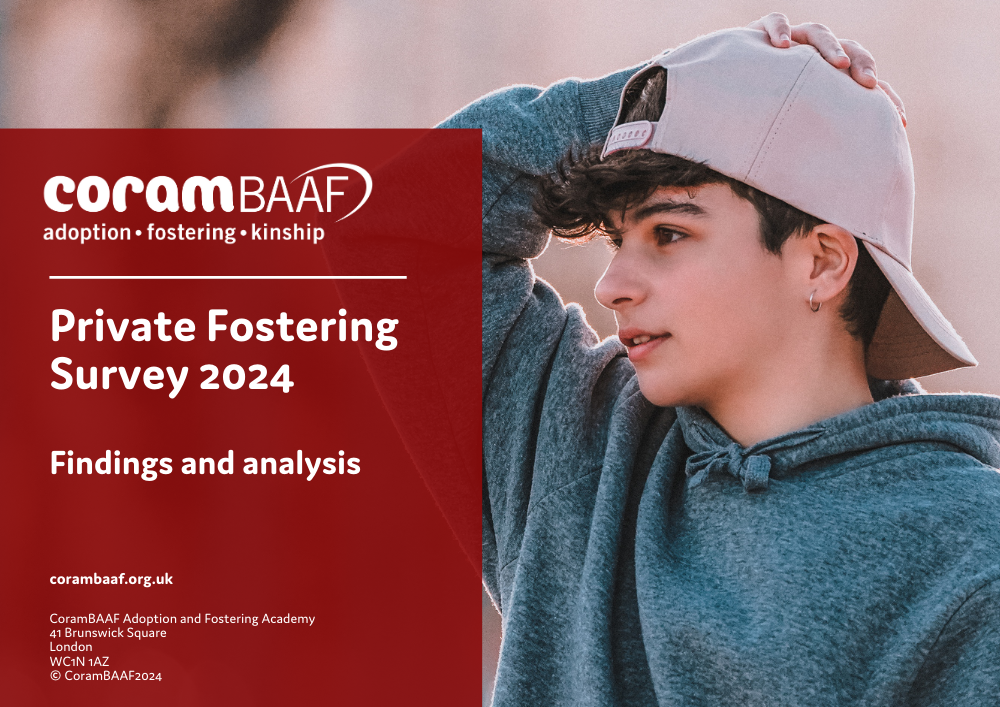
Report published: private fostering survey 2024 – findings and analysis
Private fostering is a private arrangement made between a parent and a responsible adult for the care of a child under the age of 16 (under 18 if disabled). The person who will be looking after the child is not a parent or close relative of the child, and the arrangement is planned to last for at least 28 days. As defined by the Children Act 1989, a close relative is a parent, grandparent, aunt or uncle, a stepparent (including through civil partnership) or a brother or sister.
Private foster carers may be from the extended family such as a cousin or great aunt. A private foster carer may be a friend of the family, the parent of a friend of the child, or someone previously unknown to the child’s family who is willing to privately foster the child.
The period for which the child is cared for and accommodated by the private foster carer should be continuous but can include the occasional short break. The local authority in which the private foster carer lives must be notified of the arrangement.
The Department for Education stopped collection of any data about private fostering in 2015 and therefore the number of children who are privately fostered is not known. In 2015, the Department for Education stated that the data collected was of limited value as it was numerical only, and did not offer any information about the quality of the private fostering arrangements, and therefore it did not contribute in any way to keeping children safe. Their hope was that improved future analysis of child level data in the children in need census would identify children in need or those requiring protection living in private fostering arrangements. Therefore, this data would help provide more information and insights into the profiles of harmful private fostering arrangements, and this would therefore lead to policies and practices that are more effective in identifying privately fostered children in the longer term. It seems unclear whether information and insights from child level data in the children in need census have achieved these aims.
Practitioners across the sector are concerned about the lack of data. At a basic level, it is hard to feel confident that policy makers can effectively consider the needs of privately fostered children when there is no data about numbers, nor about their characteristics, such as age, gender, ethnicity, languages spoken or duration of arrangement. We also know local authorities want to compare their own data on privately fostered children with geographical and statistical neighbours, as this could be one indicator of their success in identifying, assessing and supporting children in private fostering arrangements.
The definition of kinship care as set out in the 2023 national kinship care strategy now includes children who are privately fostered by individuals (as opposed to those privately fostered by organisations such as language schools and football academies). Children living in private fostering arrangements and their private foster carers are therefore now eligible for any universal support available to kinship families. This includes both the universal training and support commissioned by the government and delivered by Kinship, as well as the extension to the virtual school head role. It seems important that such policy initiatives can appropriately reach privately fostered children and their carers, and available data could potentially help.
CoramBAAF would like to support a better understanding of this often hidden group of children. Therefore, we launched a Private Fostering Survey in July 2024, as a first attempt to gather some basic data about the national picture from our members.
